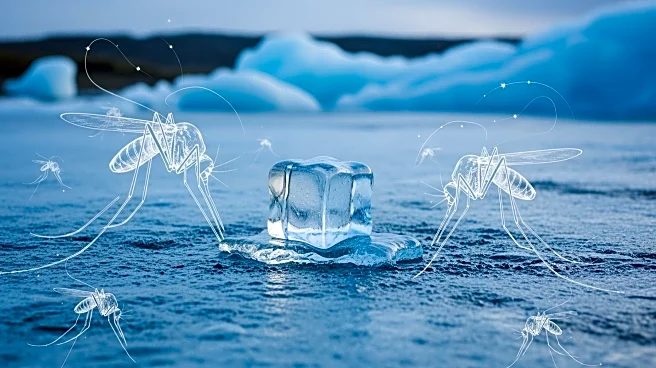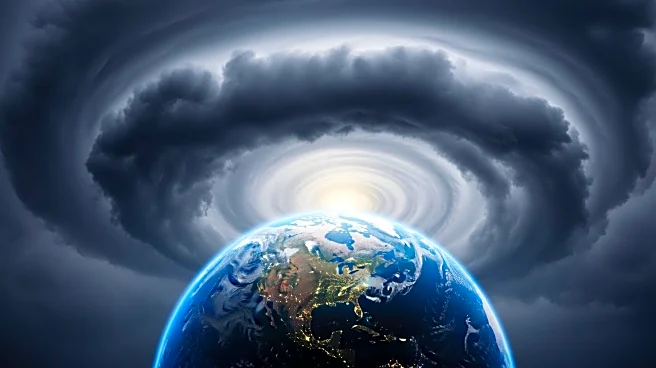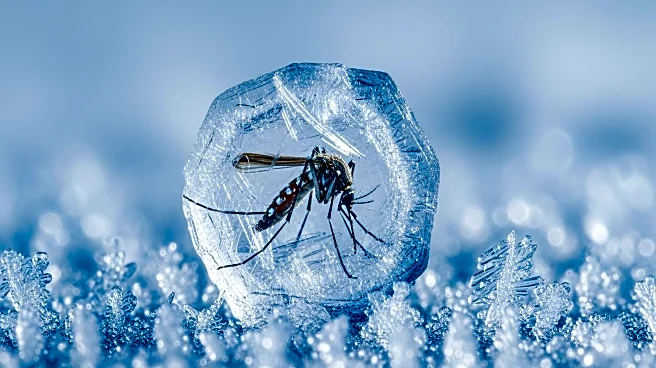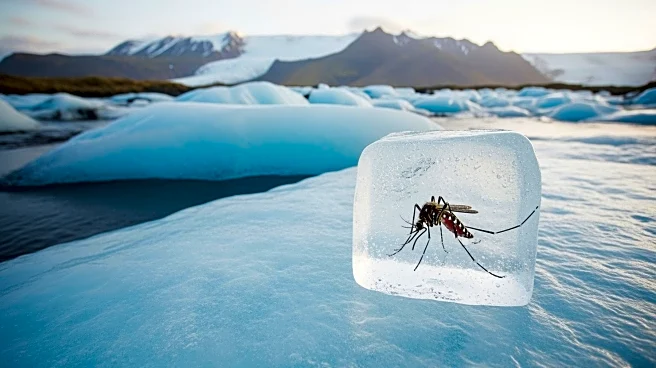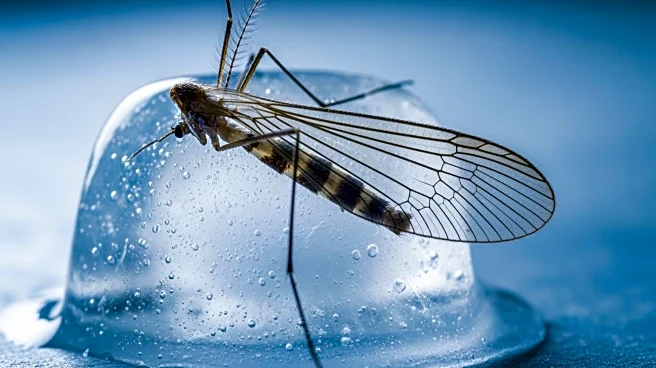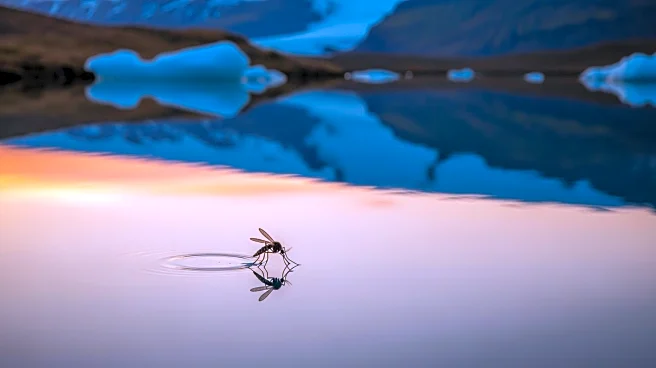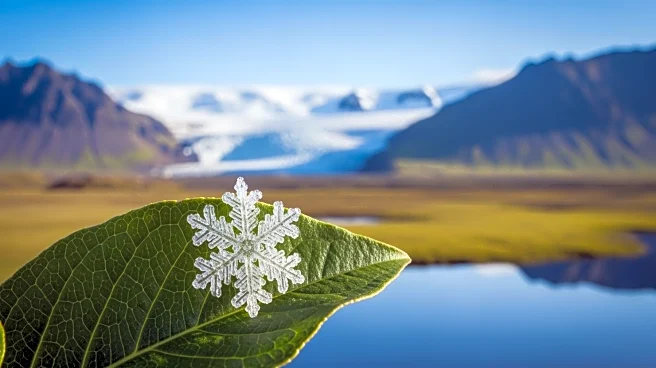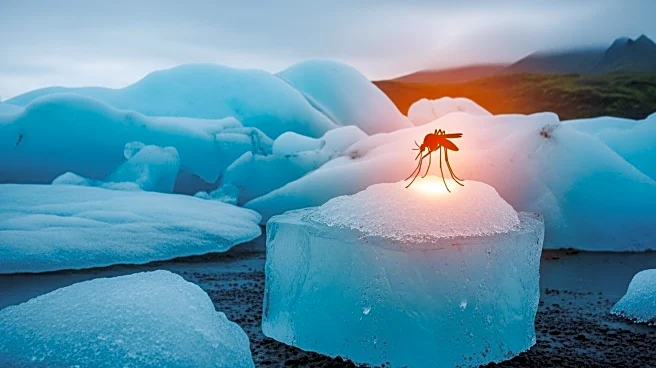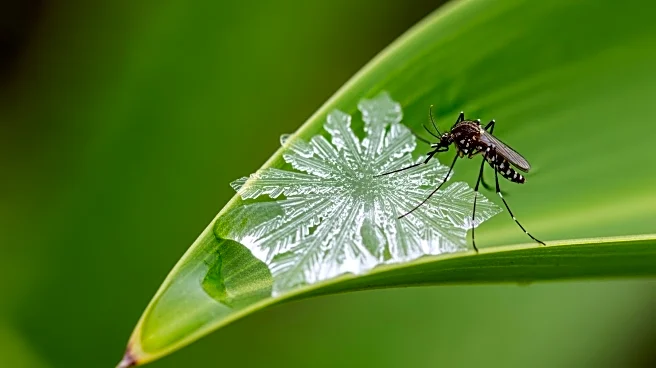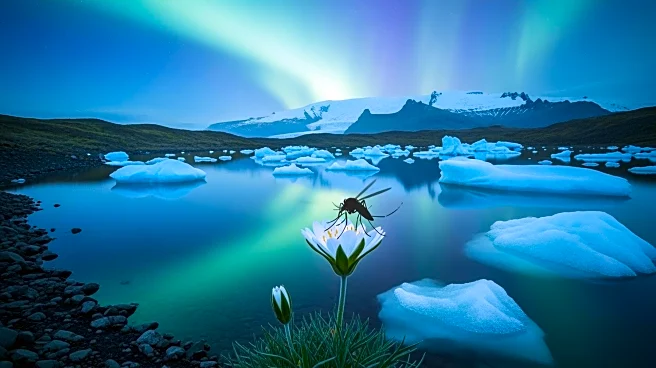What's Happening?
Iceland has reported the discovery of its first mosquitoes in the wild, marking a significant change for the country previously free of these insects. The mosquitoes were found by Björn Hjaltason in Kiđafell, Kjós, about 20 miles north of Reykjavik. Entomologist
Matthías Alfreðsson identified the species as Culiseta annulata, which is known to survive in colder climates. This discovery is notable as Iceland's harsh winters have historically prevented mosquitoes from establishing themselves. The presence of mosquitoes in Iceland is being linked to climate change, which is causing shifts in the habitats of various species worldwide. Rising temperatures and increased storms and floods are expanding the range of mosquitoes, which thrive in warm and humid conditions.
Why It's Important?
The arrival of mosquitoes in Iceland is a potential indicator of the broader impacts of climate change, which could lead to the spread of mosquito-borne diseases to new regions. This development is significant for public health and environmental monitoring, as mosquitoes are known carriers of diseases such as West Nile virus and malaria. The potential establishment of mosquitoes in Iceland could necessitate new public health strategies and environmental policies to manage and mitigate the risks associated with these insects. The situation underscores the need for global efforts to address climate change and its ecological consequences.
What's Next?
Further monitoring will be required to determine if the mosquitoes can survive Iceland's winter and establish a permanent presence. Scientists and public health officials may need to develop strategies to prevent the spread of mosquito-borne diseases. The situation could prompt Iceland to implement measures similar to those in other countries dealing with mosquito populations, such as public awareness campaigns and mosquito control programs.
Beyond the Headlines
The discovery of mosquitoes in Iceland highlights the complex relationship between climate change and biodiversity. It raises questions about how ecosystems are adapting to changing climates and the potential for new ecological interactions. This event may also serve as a case study for understanding the movement of species in response to global warming, providing insights into future ecological shifts.
